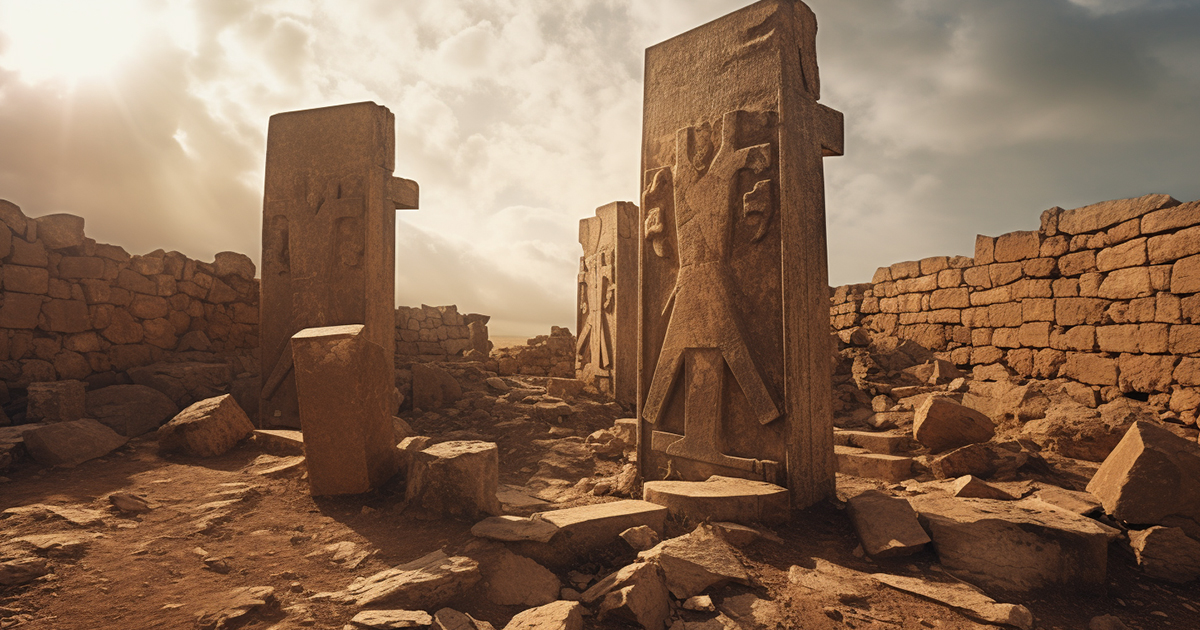Beneath the fertile soil of Sanliurfa, Turkey, amidst the rolling hills, a long-hidden secret awaited its moment of revelation. In the crispness of an October day in 1994, shepherd Safak Yildiz, tending to his flock and cultivating his field, unearthed a stone of peculiar shape. This unassuming discovery would soon capture global fascination and redefine the narrative of human history.
A ripple of excitement spread, leading to the arrival of Klaus Schmidt, a German archaeologist hailing from the esteemed German Archaeological Institute. Little did they realize that the odd stone was merely a glimpse of a deeply buried ancient puzzle waiting to be solved.
Under Schmidt’s meticulous excavation, a plethora of colossal stone monoliths came to light, some weighing up to 20 tons. Adorning these t-shaped pillars were intricate carvings showcasing a diverse array of animals, birds, and insects, a testament to the skill of a bygone era. The sheer magnitude of effort required to transport and carve these monumental stones left archaeologists in awe.

At the core of Gobekli Tepe lay circular enclosures, each housing two imposing t-shaped pillars facing one another. While the carvings stood as a marvel, the purpose of this grand site remained a riddle. It was evidently not a habitation, for no traces of daily life or human remains were found, and the absence of cultivated plants alongside wild animal bones intensified the mystery.
Driven by a quest for answers, Klaus Schmidt turned to radiocarbon dating to unlock the secrets of Gobekli Tepe. The revelations were staggering; the stone structures could date back up to 12,000 years, surpassing the emergence of humanity’s earliest known civilization by over 5,000 years. This revelation defied conventional beliefs, which previously asserted that hunter-gatherer societies lacked the capacity for such monumental endeavors.
The implications were profound, triggering contemplation about the capabilities of our ancient predecessors. Could primitive hunter-gatherers have truly engineered such sophisticated megalithic wonders? While conventional scholars grappled with this notion, an alternative theory began to take shape.
Ancient astronaut theorists, unsatisfied with the orthodox narrative, proposed a different conjecture. They posited that Gobekli Tepe was the brainchild of survivors from a lost civilization, nearly obliterated by a global catastrophe. Their assertions found validation in evidence of a catastrophic event believed to have unfolded at the end of the last ice age.
Spanning from around 108,000 BC to almost 10,000 BC, this event served as a pivotal element in their argument. According to this viewpoint, the survivors of this calamity, armed with advanced knowledge and skills, undertook the construction of Gobekli Tepe as a testament to their enduring legacy.
Watch the Video here:
While the discourse continues, Gobekli Tepe silently stands as a witness to a distant era, offering tantalizing hints about the capabilities of our ancestors and their unfathomable motivations. Despite the veil of mystery shrouding the true purpose of this ancient marvel, it serves as a poignant reminder that our history is a tapestry of intricacies and wonders beyond complete comprehension.
